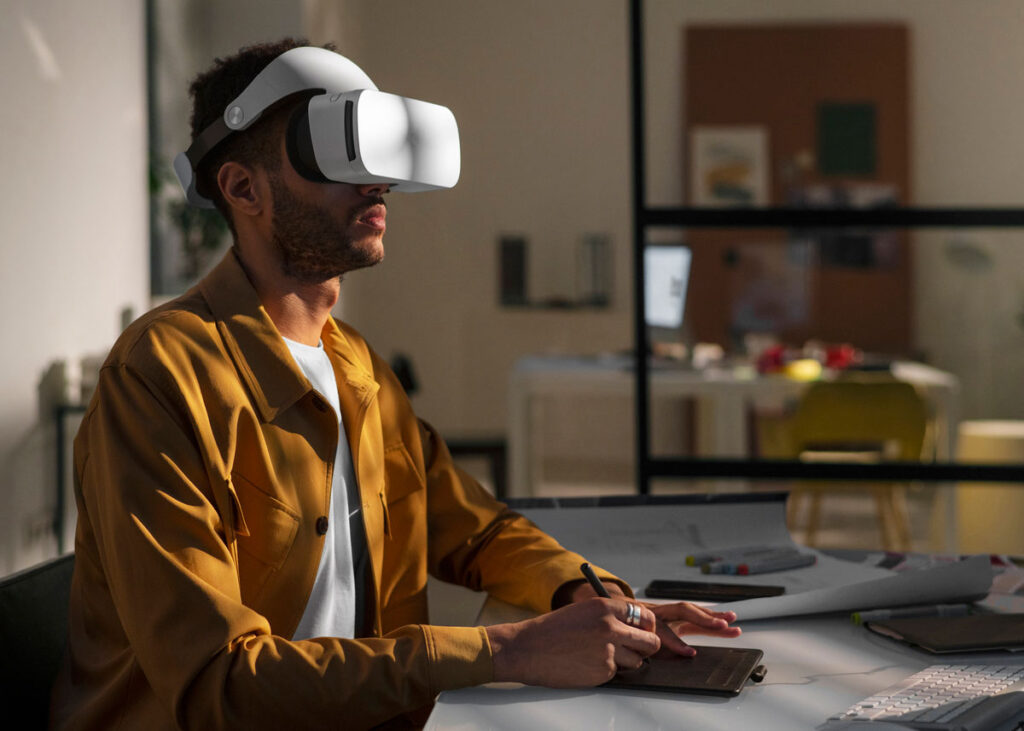Updated by Nazanin Ghodsian, 10/01/2024
Digital content is seamlessly combined with the physical world to create interactive experiences in mixed reality (MR). There are obvious advantages to using MR as soon as possible, even though some see it as a futuristic idea that hasn’t caught on in the construction sector. MR in construction increases the flow of information and streamlines work processes, delivering an intuitive interface by imitating real-world scenarios while overcoming the restrictions of the physical environment. This article goes into the role of mixed reality in construction, investigating its uses, advantages, and potential obstacles.
According to Paul Milgram’s “Virtuality Continuum,” Mixed Reality was initially described in 1994 as a combination of the actual and virtual worlds. With the use of immersive technology, MR in construction combines digital and physical settings, enabling users to see their surroundings through holographic overlays made from 3D models. The reason MR is called “Mixed” is because of this blending of domains.
The fact that no data is lost when using MR is one of its biggest benefits. In contrast to conventional techniques that alternate between 2D and 3D models, mixed reality (MR) guarantees information continuity across the course of the project. Because gaps in the transfer across dimensions are eliminated, MR in construction is especially useful.
The way construction organizations access and work with project data is being revolutionized by the usage of MR in construction sector. It allows construction teams to visualize jobs more clearly, receive rapid feedback, and cooperate with more efficiency. The potential of this technology to revolutionize the industry is growing as it develops, providing a potent instrument for enhancing accuracy and communication on the job site.
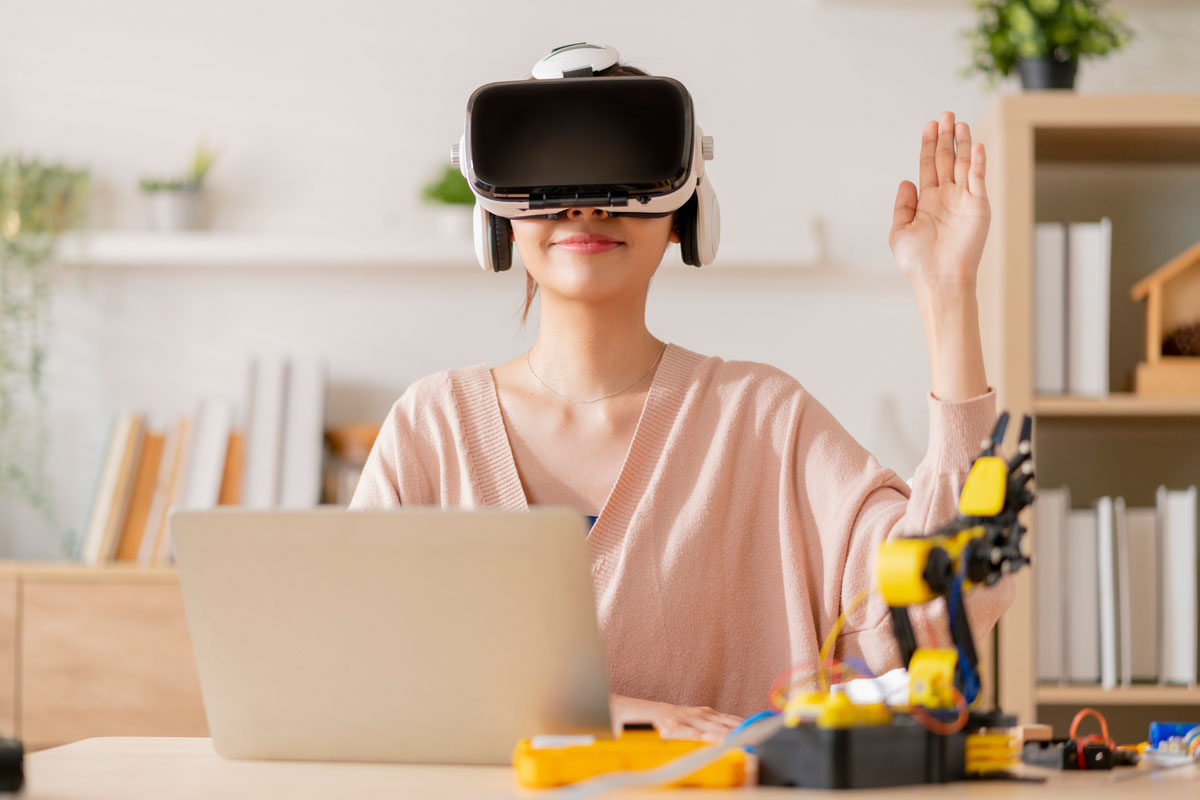
Table of Contents
What does Mixed Reality Mean in the Construction Context?
Mixed reality, often described as a technological frontier blending elements of fiction and reality, entails the integration of tangible, real-world elements with digital content within an interactive, real-time environment. It assists users in effectively interpreting both physical and digital information, as well as spatial relationships.
Examples of mixed reality include augmented reality and other hybrid configurations. Mixed reality equips architects, designers, engineers, project managers, and service providers with an unparalleled capability to craft a virtual replica of their construction plans.
Mixed reality (MR) is a term denoting the fusion of digital and real-world components. It is sometimes confused with virtual reality (VR), which creates entirely artificial digital realms, and augmented reality (AR), which supplements the physical environment with virtual elements such as data. In contrast, mixed reality constitutes a convergence of the digital and physical realms, where these two coexist and interact in real-time.
The ability to experiment with digital replicas of physical structures proves invaluable in construction work. Field testing, for instance, can identify issues before actual assembly, particularly when on-site modifications are required. MR in construction surpasses 3D models displayed on flat screens because it offers an authentic 3D experience that accurately portrays scale, dimensions, and proportions. Its precision, mirroring real-life scenarios, is remarkable. Furthermore, it facilitates and ensures seamless remote collaboration during the initial project stages.
Suggested article to read: Explore the Impact of Augmented Reality in Construction (2024)
How is Mixed Reality Enhancing Construction Practices?
Mixed reality enhances construction processes by delivering precise alignment of holographic data on construction sites through hard hat-mounted devices. Workers can now view their models superimposed onto the real world, fostering more precise collaboration and project coordination.
By fusing the actual and digital worlds, mixed reality (MR) is transforming the way that construction is done. It has a significant and varied influence. MR in construction enables construction teams, architects, and designers to visualize projects with never-before-seen accuracy. It offers a full 3D experience by superimposing digital models over actual environments, enabling a greater understanding of scale, dimensions, and proportions. This improves decision-making efficiency while simultaneously improving design correctness.
MR in construction promotes effective cooperation between project stakeholders. Teams can view and engage with shared holographic data in real-time, regardless of their physical location, using MR headsets and other equipment. This encourages easier communication and speedier problem-solving while enabling remote cooperation throughout the early project phases.
The safety of workers on building sites is also improved by MR in construction. Workers can have real-time information projected into their field of vision, such as equipment instructions or safety alerts, lowering the likelihood of accidents and mistakes.
In conclusion, MR in construction is revolutionizing the construction industry by enhancing design, teamwork, and safety. With the potential to improve building procedures even further as this technology develops, future projects could become more accurate, efficient, and safe.
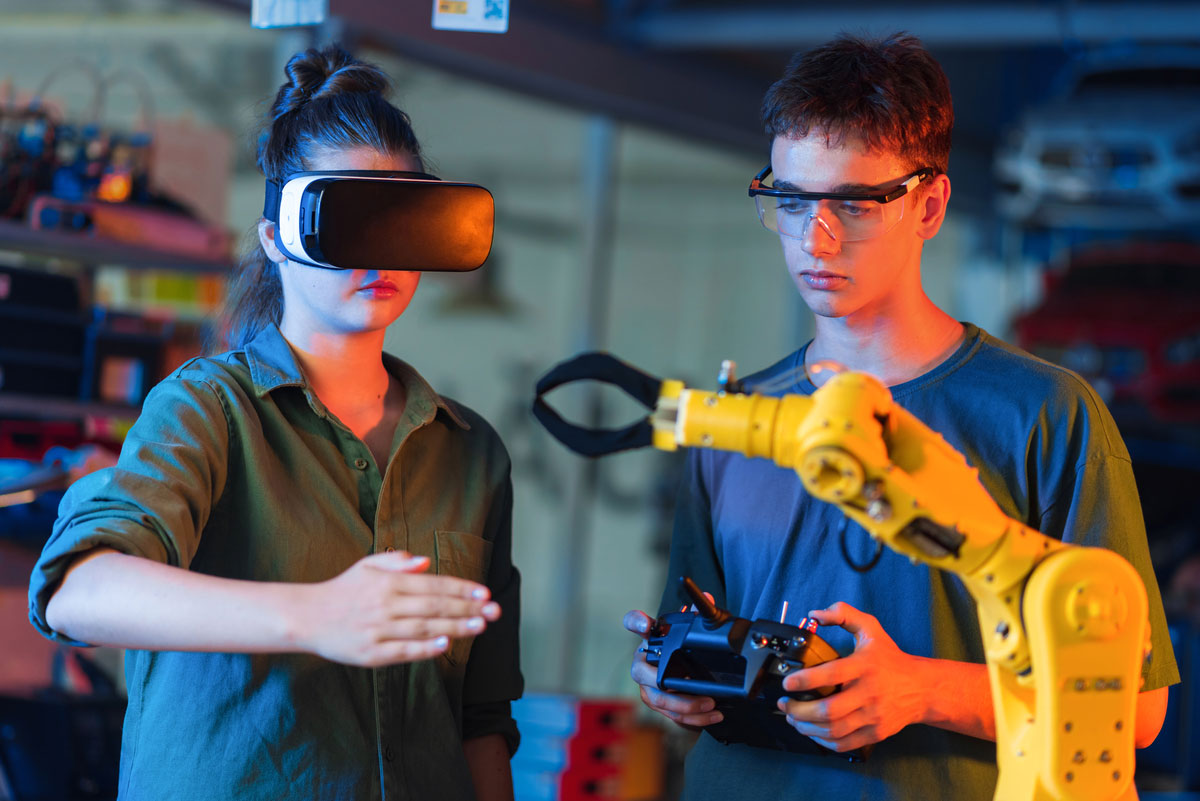
The Evolution of MR in Construction
The intellectual underpinnings of Mixed Reality (MR), a ground-breaking breakthrough, can be found in the 1800s, which is where the technology’s roots may be found. While the building sector has traditionally relied on traditional techniques, the merger of the real and virtual worlds that is MR in construction has opened up new possibilities.
The 1800s: In 1838, scientist Sir Charles Wheatstone introduced the concept of “stereopsis” or “binocular vision,” wherein the brain combines two images from each eye to create a single 3D image. This concept laid the foundation for the development of stereoscopes, devices that transformed pairs of images into 3D representations with a perception of depth. Stereoscopic displays, as used in contemporary VR systems, enhance the sense of immersion by introducing depth to digital visuals.
The early 1900s: Fast forward to 1935, when American science fiction writer Stanley Weinbaum authored “Pygmalion’s Spectacles.” This work featured a protagonist exploring a fictional world using a pair of goggles, offering an early vision of today’s VR.
Suggested article to read: The 7 Benefits of Virtual Reality in Construction
The 1950s to the 1970s: The decades spanning the 1950s through the 1970s witnessed early instances of VR and AR technology:
- In 1956, cinematographer Morton Heilig introduced Sensorama, the first VR machine. This contraption combined 3D, colored video (utilizing previously mentioned stereoscopic technology) with auditory elements, scents, and a vibrating chair, immersing viewers in movies. In 1960, Heilig patented the first head-mounted display, merging stereoscopic 3D visuals with stereo sound.
- Concurrently, computer scientist Ivan Sutherland presented his concept of the “Ultimate Display” in the 1960s, outlining a virtual world so lifelike that it would be indistinguishable from reality. This notion serves as a blueprint for modern VR.
- Harvard professor Ivan Sutherland crafted the first AR headset, known as “The Sword of Damocles,” in 1968. This headset showcased computer-generated graphics enhancing the user’s perception of reality, foreshadowing today’s AR experiences.
- In the 1970s, MIT introduced the Aspen Movie Map, a computer-generated tour of Aspen’s streets, created from photographs taken by a car traveling through the city, foreshadowing concepts akin to Google Street View.
From the 1980s to 2000: The 1980s witnessed advancements that improved the VR experience, with VPL Research Inc., founded in 1985, becoming the first company to market VR goggles and gloves. Jaron Lanier, one of VPL’s founders, coined the term “virtual reality” in 1987. The early 1990s introduced VR arcade machines like the SEGA VR-1 motion simulator, and by the mid-90s, affordable VR headsets were available for home use. In 1998, Sportsvision broadcasted the first NFL game with a yellow yard marker overlay, laying the groundwork for graphics overlaid on live camera feeds in sports broadcasting.
From 2010 to 2020: From 2010 onwards, XR (Extended Reality) technologies gained momentum:
- In 2010, Palmer Luckey created a prototype for the Oculus Rift VR headset, rekindling interest in VR. Oculus VR’s Kickstarter campaign raised $2.4 million, and in 2014, Facebook acquired the company for approximately $2 billion.
- In 2014, Sony and Samsung announced their VR headsets, while Google introduced the Cardboard, an affordable cardboard VR viewer for smartphones, and Google Glass, which brought AR into the public eye.
- Microsoft released the HoloLens headset in 2016, introducing the concept of “mixed reality.” Pokémon GO popularized AR, and by the end of 2016, numerous companies were developing VR and AR experiences.
- In 2017, IKEA released the AR app IKEA Place, showcasing early AR applications in mainstream retail.
By 2020, XR technologies had diversified into various industries, including manufacturing, education, healthcare, construction, and law enforcement, demonstrating that XR was no longer confined to gaming and entertainment. The future promises further evolution and mainstream integration of these technologies.
2020 to 2024: The development of Mixed Reality (MR) in the construction industry between 2020 and 2024 will be a turning point in the sector’s adoption of immersive technologies. During this time, MR in construction has evolved from a promising idea to a useful and essential technology.
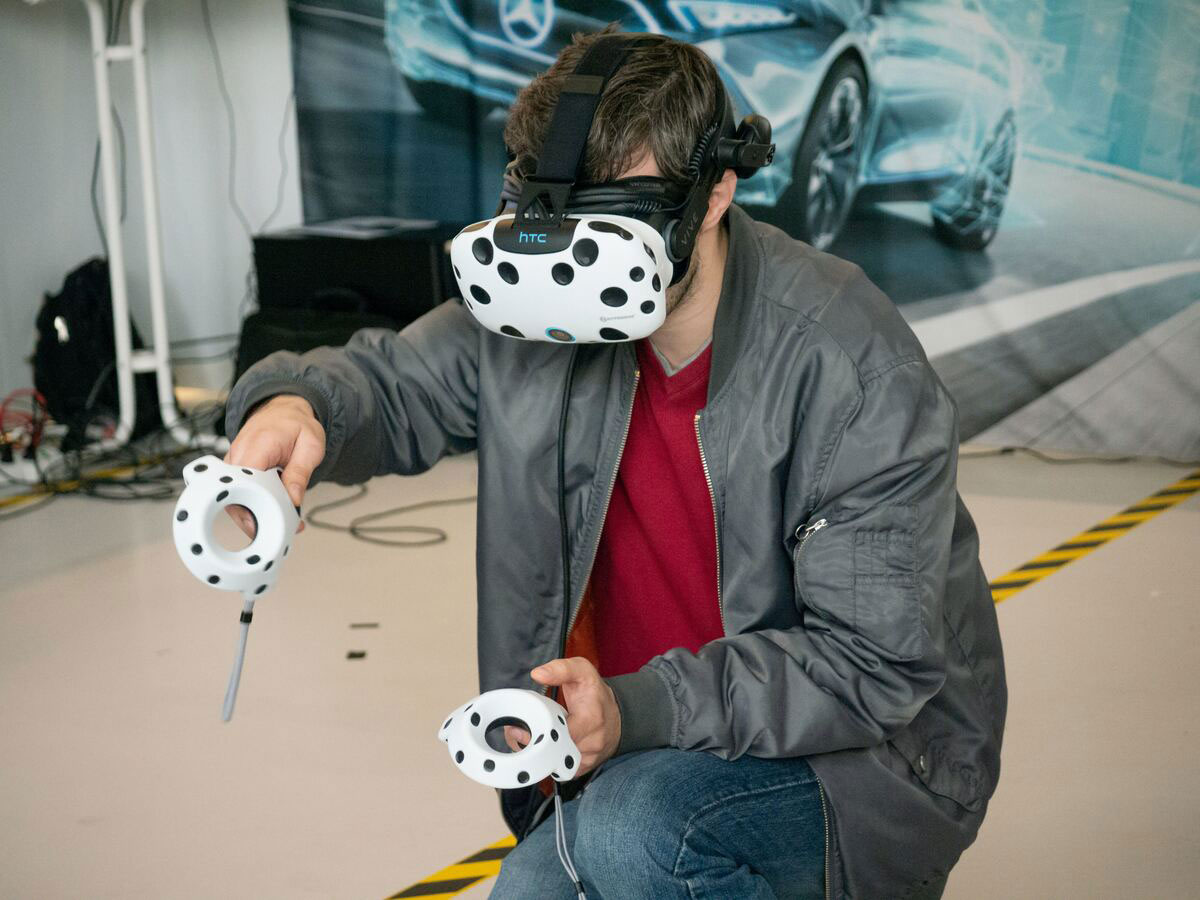
What are MR Tools and Hardware?
For Mixed Reality (MR) to be effective, users must be able to seamlessly transition between the real and virtual worlds. MR has emerged as a game-changing technology. These MR in construction hardware and toolkits are essential for developing immersive and interactive experiences. The core components of the MR in construction hardware ecosystem are examined below:
1. Head-Mounted Displays (HMDs):
- Microsoft HoloLens: The Microsoft HoloLens, one of the first MR HMDs, is recognized for its capacity to combine holographic digital content with the real environment. To overlay virtual items into the user’s field of view, it combines sensors, cameras, and a transparent display.
- Magic Leap One: This HMD uses an innovative optical technique to display digital content in the user’s surroundings, fusing the real and virtual worlds seamlessly. It has hand motion detection and spatial audio for simple interactions.
2. Sensors and Cameras:
- Depth-Sensing Cameras: The depth and dimensions of the physical environment can be captured thanks to these cameras. They provide interactions like hand tracking and gesture recognition and allow for the accurate placement of virtual items in the physical world.
- Inertial Measurement Units (IMUs): IMUs have gyroscopes and accelerometers to detect the HMD’s orientation and movement in real-time. With the help of this knowledge, virtual objects are kept attached and perpendicular to the user’s viewpoint.
3. Spatial Mapping and Tracking:
- SLAM (Simultaneous Localization and Mapping): By creating a map of the environment in real-time, SLAM technology enables an MR in construction device to comprehend its position to tangible things. This makes it possible to interact and put virtual content precisely.
- LiDAR (Light Detection and Ranging): LiDAR sensors produce precise 3D maps of the environment by measuring distance using laser pulses. Apple’s decision to include LiDAR in its products has improved MR in construction experiences overall, especially in AR applications.
4. Controllers and Input Devices:
- Hand Controllers: These portable gadgets capture hand gestures and movements to let users interact with virtual things. For additional input options, they have buttons and triggers.
- Hand Tracking: To detect and mimic hand movements in the virtual environment, some MR in construction systems use hand-tracking technology, which eliminates the need for real controllers.
5. Audio Systems:
- Spatial Audio: Sound sources are positioned in 3D space to offer users an immersive auditory experience. Spatial audio technology is frequently used in MR in construction systems to produce realistic soundscapes.
- Bone Conduction: Some HMDs send audio using bone conduction technology to the user’s inner ear, leaving the ears accessible to ambient noise. This strategy improves comfort and spatial awareness.
6. Computing Hardware:
- Processors and GPUs: To generate high-quality images and maintain real-time tracking and interaction, MR in construction experiences requires powerful CPUs and GPUs.
- Connectivity: To facilitate updates and data interchange, MR in construction devices frequently offer wireless connectivity options.
7. Accessories:
- Haptic Feedback Devices: Tactile feedback is provided by accessories like haptic vests and gloves, which simulate sensations like touch, vibration, and force feedback to improve immersion.
- AR Cloud Services: By enabling the exchange of real-world geographical data and enabling collaborative, permanent AR experiences, cloud-based platforms are growing to be crucial to MR in construction.
Hardware developments are fueling the expansion of the MR in construction ecosystem and the technology. It is anticipated that improved displays, better mobility, and more user-friendly input techniques would significantly improve the MR in construction experience. Together, these software and hardware elements open the door for creative applications in a variety of fields, from gaming and education to healthcare and business solutions, and they promote a time when the physical and virtual worlds coexist peacefully.
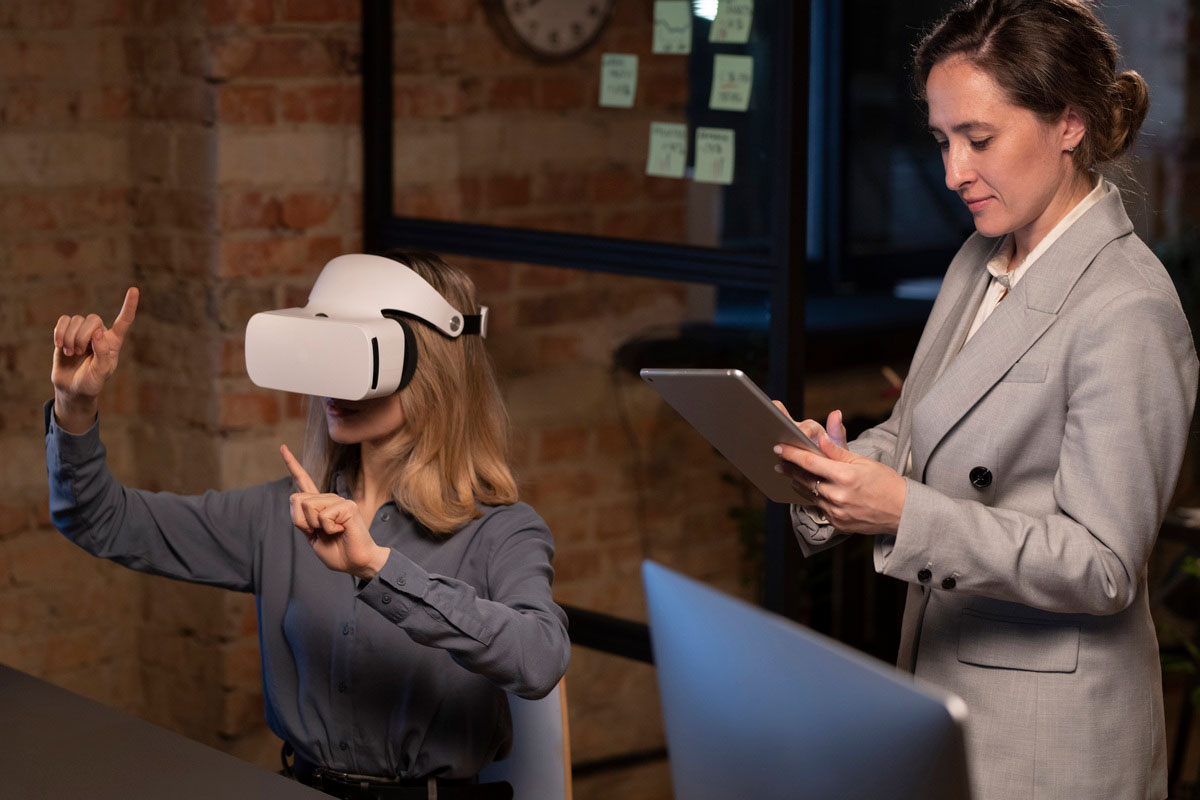
What are the Pioneering Companies and Transformative Potential of MR in Construction?
The concept of Mixed Reality (MR), which seamlessly melds the real and virtual worlds, is an emerging frontier in the realm of immersive technology. While we have made initial forays into mixed reality through Augmented Reality (AR), there remains substantial groundwork to cover before realizing fully optimized MR in construction experiences in our everyday lives.
Mixed Reality surpasses the fundamentals of AR by forging deeper connections and alignment between the digital and physical realms. Achieving an authentic mixed reality experience necessitates access to cutting-edge software and hardware, coupled with boundless creativity and innovation.
In the MR in construction landscape, several pioneering companies are making remarkable strides, each contributing to the transformative potential of this technology. This article introduces a selection of these MR in construction solutions that offer a glimpse into the extraordinary possibilities MR has to offer.
- Allison Partners: Allison Partners is a communications and marketing firm at the forefront of embracing MR and VR technologies. Their dedication to exploring the immersive digital landscape extends from mixed and virtual reality experiences to the promising realms of the Metaverse. By partnering with Allison Partners, companies are empowered to deliver immersive customer experiences and innovative marketing initiatives, gaining a competitive edge in the evolving digital landscape.
- Microsoft HoloLens: Microsoft has been a prominent player in the MR in construction domain, notably through its HoloLens headset and Microsoft Mesh platform. As HoloLens continues to evolve, it has unlocked new levels of productivity across various industries, including healthcare, education, engineering, and manufacturing. Microsoft’s contribution to MR is poised to shape the continued evolution of this technology.
- Augment IT: Augment IT offers an immersive journey into MR’s potential for businesses. They collaborate with enterprises to unlock innovative workflow experiences using mixed and augmented reality. In an era where digitizing distributed teams’ workflows is vital, Augment IT is pioneering new pathways to enhance productivity, collaboration, and innovation across industries like construction and manufacturing.
- Varjo: Varjo is a renowned player in the MR in construction landscape, specializing in hardware solutions that combine mixed reality and virtual reality tools. With a focus on enterprise-level technology, Varjo’s powerful headsets are paving the way for holographic collaboration and product ideation experiences. Their commitment to tailored solutions for business environments has earned them trust among industry leaders worldwide.
- Arvizio: Arvizio is dedicated to bringing augmented and mixed reality experiences to the enterprise sector. Their immersive technology showcases the potential for businesses to achieve new heights through extended reality. Arvizio offers collaborative 3D visualization of large models, AR-guided instruction experiences, 3D models, documentation, and tools for remote expert assistance. Collaborating with partners like MagicLeap and Microsoft, Arvizio is well-versed in crafting exceptional AR and MR in construction experiences.
- Fundamental VR: Despite its name, Fundamental VR specializes in more than just virtual reality. The company also empowers brands to leverage extended reality, including mixed and augmented reality, by integrating haptics and machine learning into immersive technology. Focusing on the healthcare sector, Fundamental VR’s Fundamental Surgery platform delivers multimodal education and simulation experiences across a wide range of MR and mobile devices, uniquely holding educational accreditation from leading medical institutions.
- Taqtile: Taqtile leads the MR arena in educational and collaborative experiences, enhancing deskless work productivity. Their powerful platform provides teams with real-time guidance and support, reducing the time needed for complex tasks and collaborative endeavors. Suitable for diverse industries, Taqtile ensures that distributed teams have instant access to specialized assistance, streamlining their operations and fostering productivity.
These innovative companies exemplify the remarkable advancements and transformative potential of MR across various industries, offering a glimpse into the boundless opportunities that lie ahead in the ever-evolving world of mixed reality.
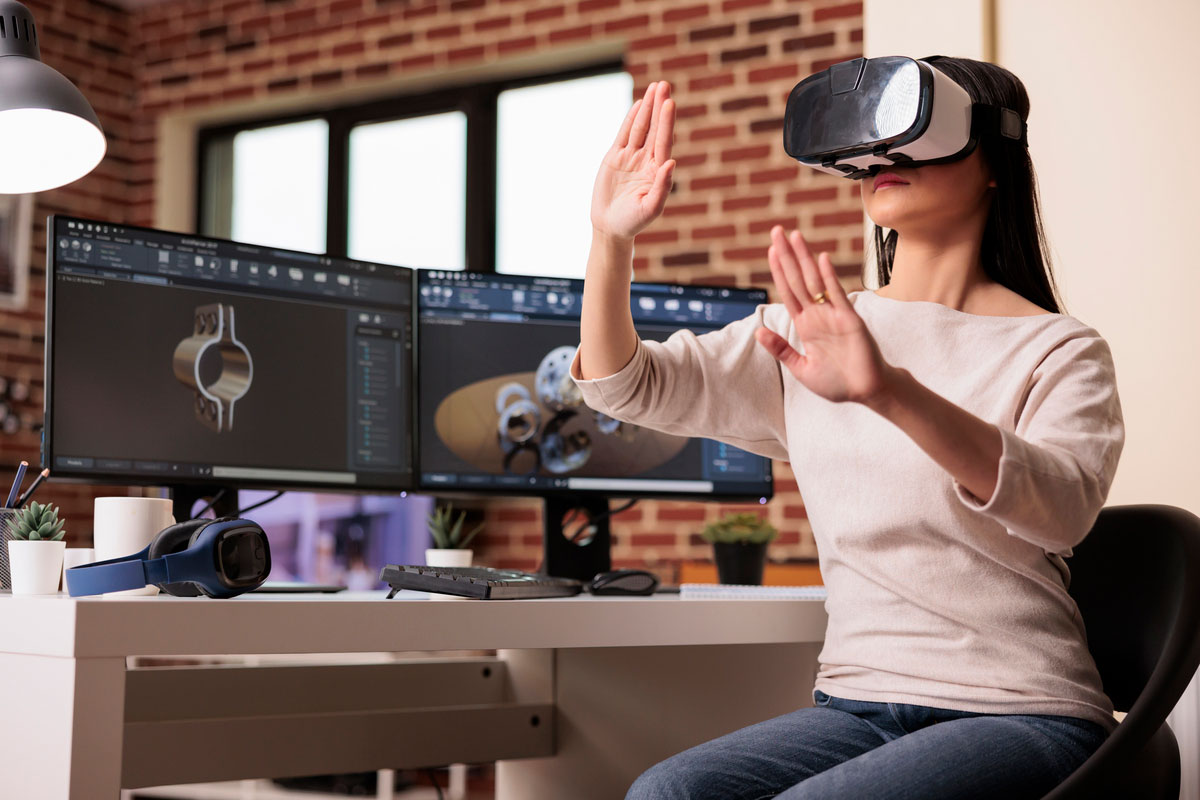
Challenges and Limitations of MR in Construction
The adoption of mixed reality (MR) is still in its nascent stages, prompting companies to invest in extensive research to integrate it into their business operations effectively.
Mixed reality relies on immersive technology and artificial intelligence, both of which are relatively new and not yet widely deployed. MR in construction demands specialized expertise, and the creation of 3D content is costly, time-intensive, and hardware-demanding. Here are the key hurdles in standardizing mixed reality:
- Costs: Developing environments that blend real and virtual elements entails substantial upfront expenditures. Beyond hardware costs, investing in comprehensive software development kits and hiring skilled developers to craft tailored applications involves significant financial commitments, with uncertain returns on investment (ROI).
- Outdated Spatial Mapping Techniques: Traditional spatial mapping methods, often relying on computational geometry or mathematical algorithms, provide only approximate estimations of real-world object positioning. To seamlessly incorporate 3D elements into specific environments, precise mapping of real-world coordinates is imperative.
- Skilled Workforce: Establishing an optimal MR in construction experience necessitates a team of service specialists, data analysts, and software engineers capable of building, training, and rigorously testing the entire infrastructure from scratch. The recruitment and retention of such skilled professionals present a prominent challenge for industries.
- Time-Consuming: MR in construction is not typically chosen as an expeditious ROI-generating method. Startups, for instance, often rely on rapid production and efficient marketing to boost sales through a minimum viable product (MVP). In contrast, mixed reality tends to require a more extended timeframe to yield results.
- Diverse User Experience: MR caters to users with varying levels of technological proficiency. Some individuals may be uncomfortable using devices to engage with MR in construction experiences, introducing an additional layer of complexity in user adoption and engagement.
MR in Construction: Future Outlook for 2024
Innovative technologies are making science fiction a reality, with augmented reality (AR) being a prime example. The immersive experience of holograms, reminiscent of Star Wars and Marvel movies, has transcended entertainment to become a valuable business tool. As we explore the 12 AR trends shaping 2024, it’s crucial to consider how these solutions can benefit your business.
- Metaverse Integration: AR is increasingly intertwined with the metaverse, breaking down barriers between digital and physical realms, and offering diverse possibilities for businesses and consumers alike.
- AR and AI Synergy: Artificial intelligence (AI) is instrumental in facial and spatial recognition, vital for AR functionality. The combination of AR and AI leads to innovative solutions, enhancing accuracy and efficiency.
- Evolution of Mobile AR: Mobile devices remain pivotal in delivering AR experiences, with continual advancements in technology enhancing the mobile AR experience.
- WebAR Accessibility: WebAR, powered by web browsers, offers accessibility advantages but may have limitations compared to native AR applications.
- Cross-Platform AR: Developing cross-platform AR apps poses challenges but offers advantages in terms of coding ease and faster time to market.
- AR Glasses Prospects: Consumer-friendly AR glasses are on the horizon, with Meta’s Cambria and Apple’s LiDAR scanner advancements paving the way.
- AR in Marketing: AR is applied in marketing through interactive business cards and feature-rich AR manuals, offering engaging experiences to customers.
- Indoor and Outdoor Navigation: Technologies like BLE, Wi-Fi RTT, and UWB facilitate indoor navigation, with potential applications in various sectors.
- Healthcare and AR: AR and AI are revolutionizing healthcare, enabling hands-free solutions, remote patient support, and disease detection.
- AR Shopping Experiences: Brands are adopting AR for virtual try-on experiences, enhancing online shopping through customization and visualization.
- AR in Manufacturing: AR improves worker training, maintenance processes, and remote troubleshooting in manufacturing.
- AR in the Automotive Industry: AR applications in the automotive sector include heads-up displays for on-road object highlighting, parking assistance, and driver awareness assistance apps like WakeUp.
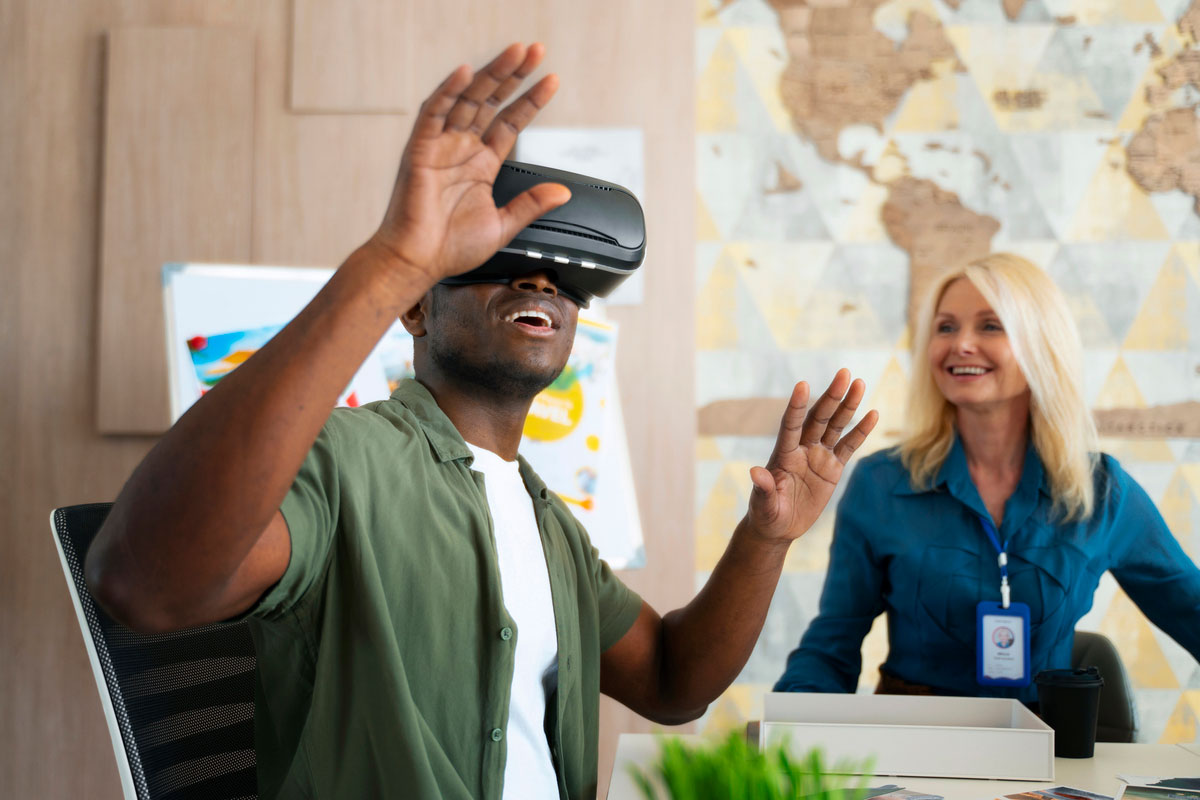
Conclusion
Mixed Reality (MR) is poised to revolutionize the construction industry in the coming years. It represents a transformative leap in the way construction processes are visualized, executed, and managed. By seamlessly blending the digital and physical worlds, MR in construction enhances decision-making, collaboration, and safety on construction sites.
However, the path to widespread MR adoption in construction is not without challenges. The costs associated with hardware, software development, and skilled personnel can be substantial. Precise spatial mapping and the need for a skilled workforce add complexity to implementation. Moreover, MR in construction adoption may require a cultural shift within construction companies.
Despite these challenges, the potential benefits of MR in construction are undeniable. It offers a more accurate and immersive way to plan, visualize, and execute construction projects. MR enhances collaboration between on-site and off-site teams, reduces errors, and improves safety through real-time information delivery.
As we move forward into 2024 and beyond, the construction industry should keep a close eye on the evolving landscape of MR. Investments in research, development, and workforce training will be essential to harness the full potential of this technology. With continued innovation and industry-wide adoption, MR in construction has the power to transform construction practices, making projects more efficient, precise, and safe. The future of construction is becoming increasingly mixed with reality, and the possibilities are both exciting and transformative.
FAQs
What is Mixed Reality in Construction, and how does it Work?
- Answer: In the construction industry, mixed reality (MR) blends digital and physical aspects to enable on-site interaction with 3D models and holographic overlays. Construction experts may examine project data, get real-time feedback, and make adjustments by merging virtual things with their physical environment using technologies like the Microsoft HoloLens or Magic Leap One. MR facilitates the planning and execution of projects by simulating designs, spotting possible problems, and increasing accuracy.
How is Mixed Reality Improving Construction Project Accuracy?
- Answer: By offering a 3D, real-time visualization of construction plans superimposed over the actual site, MR increases project accuracy. As the digital models are superimposed over the real environment, teams can observe precise alignments, measurements, and proportions, which minimizes mistakes and misunderstandings.
What are the benefits of using Mixed Reality in construction?
- Answer: Among the main advantages of MR in building are:
- Improved visualization: Teams may visualize intricate 3D models in real time with MR, which increases design accuracy.
- Improved cooperation: Teams working remotely can communicate with the same holographic models and make choices and adjustments in real time.
- Enhanced safety: MR can provide equipment instructions and safety data right in the line of sight of workers.
- Decreased rework: By using MR simulations to identify design faults early on, costly rework later in the project can be avoided.
- Enhanced productivity: Construction procedures are made more efficient by immersive visualization and real-time feedback.
What are the Key Tools and Devices Used for Mixed Reality in Construction?
- Answer: MR construction tools and gadgets that are most frequently utilized include:
- Head-Mounted Displays (HMDs): At the heart of mixed reality (MR) are gadgets like Microsoft HoloLens and Magic Leap One, which let users examine holographic representations in actual environments.
- LiDAR and depth-sensing cameras: These aid in capturing the physical surroundings so that virtual objects can be placed precisely.
- The use of hand controllers and tracking sensors makes interacting with digital models and objects easier.
SLAM technology: This allows virtual items to be positioned accurately by mapping physical environments in real-time.
What are the Challenges of Adopting Mixed Reality in the Construction Industry?
- Answer: The following are a few obstacles to MR adoption in the construction industry:
- High expense: The cost of MR gear, software development, and a skilled personnel is high, and the ROI may take some time to realize.
- Complex spatial mapping: Current technologies may not be able to provide the accurate spatial mapping technology needed to align virtual models with the actual environment.
- Workforce with expertise: Software engineers, data analysts, and technicians are needed to implement MR technologies.
User adoption: The adoption of MR technology may be slowed down since some construction experts are not at ease with it.
Suggested article for reading:
What is Eco Friendly Construction & Why is it important? 2024 Guide
The Future of Construction Industry; 2024 and Beyond
Case Study: Top 4 Eco-Friendly Smart Building Construction Projects
Reduce Carbon Emission in Construction; Ultimate Guide in 2024
Nearly Zero Energy Buildings (NZEB); Ultimate Guide 2024
Building Energy Monitoring Systems; Guide to 2024
The 7 Benefits of Virtual Reality in Construction
Resources:
Construction Placement | Tekla | Forbes | Mobidev | Learn G2 | XR Today | rinf.tech | GlobeNewsWire | IndustryArch | JLG
For all the pictures: Freepik | Unsplash

